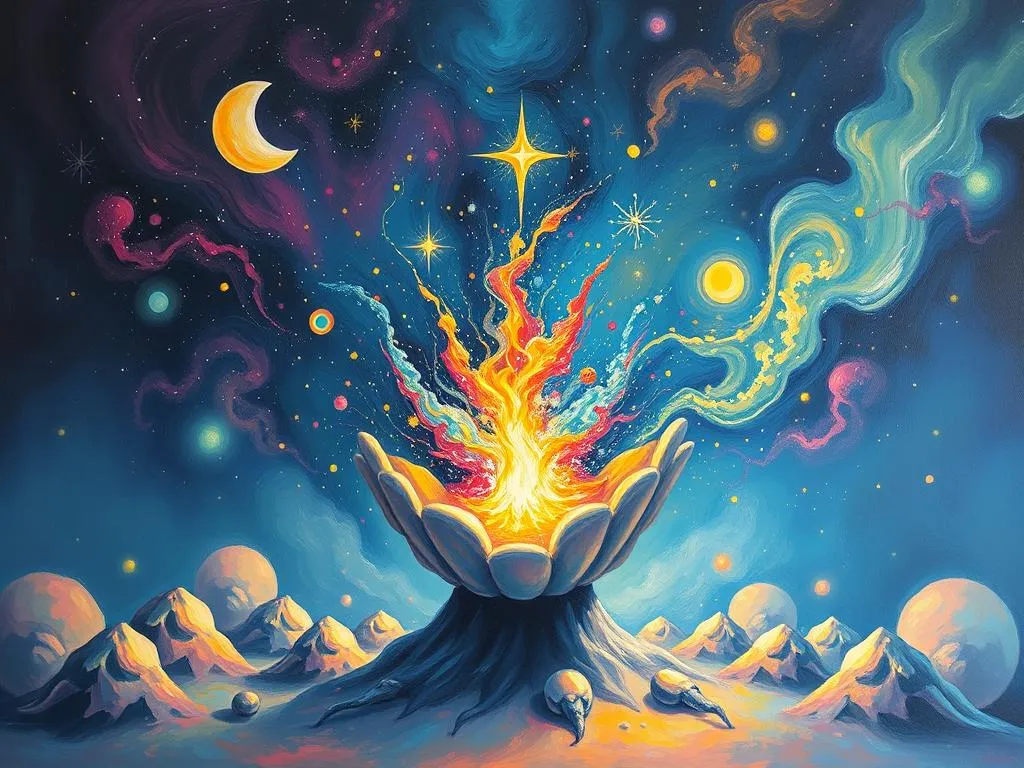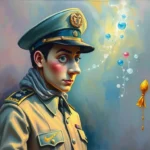
Introduction
Dreams have fascinated humanity for centuries, serving as windows into our subconscious minds. They often reflect our deepest fears, desires, and unresolved conflicts. This intrigue lies not only in the vivid imagery but also in the profound meanings that can be extracted from them. Unveiling Hidden Meaning Dream Symbol Dump is an exploration of the common symbols found in dreams and what they may reveal about our waking lives. By examining these symbols, we can gain insights into our emotional states, interpersonal relationships, and even our life paths. In this article, we will delve into the symbolism and meaning behind common dream symbols, variations of these dreams, and how they connect to our real-life experiences.
Symbolism and Meaning
Dream symbols are the language of the unconscious, often rich with meaning that can vary widely depending on personal experiences and cultural backgrounds. One of the most common dream symbols is water. It can represent emotions, the unconscious mind, or a state of flow in life. For instance, a calm sea may signify tranquility and emotional balance, while turbulent waters might indicate chaos or emotional turmoil.
Another prevalent symbol is flying, which often symbolizes freedom and a desire to rise above challenges. However, the context of flying matters significantly; soaring high can reflect confidence, while struggling to stay airborne may reveal feelings of insecurity or fear of failure.
Chasing is also a frequent theme in dreams. When one finds themselves being pursued, it often signifies avoidance of a situation or emotion in waking life. The pursuer may represent a part of oneself—such as anxiety or guilt—that needs to be confronted. Conversely, if one is the one doing the chasing, it might reflect a strong desire to attain something or someone that feels just out of reach.
Teeth falling out is another common dream symbol, often associated with feelings of powerlessness, loss, or anxiety about aging and self-image. This dream can signal concerns about how one is perceived by others or fear of losing control over a situation.
While these symbols have general meanings, it’s essential to recognize that their interpretations can vary widely based on individual experiences and cultural context. For instance, a snake often symbolizes transformation and healing in some cultures, while in others, it may evoke fear or betrayal. Thus, understanding personal associations with symbols can lead to a richer interpretation.
Key Scenarios and Variations
The beauty of dream symbolism lies in its variability. Different scenarios can dramatically alter the interpretation of similar symbols. For example, dreaming of water can take on multiple meanings based on the context. A dreamer who finds themselves swimming in a serene lake may feel at peace with their emotions, whereas someone who is drowning may feel overwhelmed by their feelings or circumstances. Each scenario invites deeper self-reflection.
Similarly, the act of flying can represent different states of mind. If one dreams of gliding effortlessly through the sky, it may indicate a sense of freedom and achievement. However, dreaming of crashing or falling while flying might suggest an impending failure or fear of losing control.
Chasing scenarios can also vary. In a dream where one is being chased by a monstrous creature, it may symbolize a fear that feels insurmountable. On the other hand, if the dreamer is pursuing someone or something they desire, it may represent ambition and a drive for success. The emotions felt during these dreams—fear, excitement, or determination—are crucial in understanding their deeper meaning.
The symbolism of teeth falling out can also manifest differently. If someone dreams of losing teeth while speaking, it may signify anxiety over self-expression or fear of being misunderstood. In another context, losing teeth in a social setting may highlight concerns about aging or how one is perceived by peers.
These variations emphasize the importance of personal context in dream interpretation. Reflecting on the emotions and thoughts surrounding each scenario can reveal hidden truths about one’s motivations and anxieties.
Real-Life Connections and Takeaways
Connecting dreams to real-life situations can serve as a powerful tool for self-reflection and personal growth. Dreams often hold a mirror to our waking lives, revealing truths we might not consciously acknowledge.
For instance, if you frequently dream of water, consider your emotional state. Are you feeling overwhelmed, or are you experiencing a sense of peace? Pay attention to the context of your waking life. Perhaps you’re navigating a significant change or facing emotional challenges that need addressing. Journaling about your dreams and the feelings they evoke can help clarify these connections.
If you find yourself flying in your dreams, examine areas in your life where you feel empowered or restricted. Are there opportunities for growth that you’re currently overlooking? Conversely, if your flying dreams are associated with falling or crashing, it may be time to confront fears of failure or insecurities that could be holding you back.
In the case of chasing, think about what—or who—you might be avoiding in your waking life. Is there a situation that requires your attention? Alternatively, if you are the one doing the chasing, reflect on your ambitions. Are they aligned with your true desires, or are they influenced by external expectations?
Lastly, if you experience the unsettling dream of teeth falling out, take a moment to assess your feelings about self-image and communication. Are there aspects of yourself that you feel insecure about? This dream could be a call to embrace your authenticity and work on self-acceptance.
Encouraging a practice of self-reflection can provide invaluable insights. Consider keeping a dream journal where you can document your dreams, the emotions they evoke, and any significant events occurring in your life. Over time, patterns may emerge, revealing deeper connections between your dreams and your waking reality.
In conclusion, exploring the hidden meanings behind our dreams can be a fascinating journey of self-discovery. By analyzing symbols, considering variations in scenarios, and connecting these dreams to our real-life experiences, we can unveil insights that lead to personal growth and understanding. Encourage yourself to reflect on your dreams, as they may hold the keys to unlocking your subconscious fears and desires, guiding you toward a more fulfilled life.







